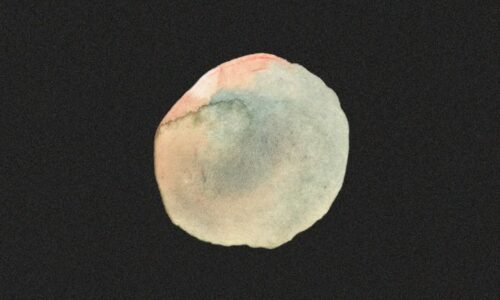8 June 2016
Anno is an exciting new Scottish Ensemble and Spitalfields Music commission by classical-electronic crossover composer Anna Meredith and visual artist Eleanor Meredith. SE blogger-in-residence Rosie Davies follows the artists and crew from Glasgow to London’s Oval Space for a behind-the-scenes glimpse at what goes into a project like this.
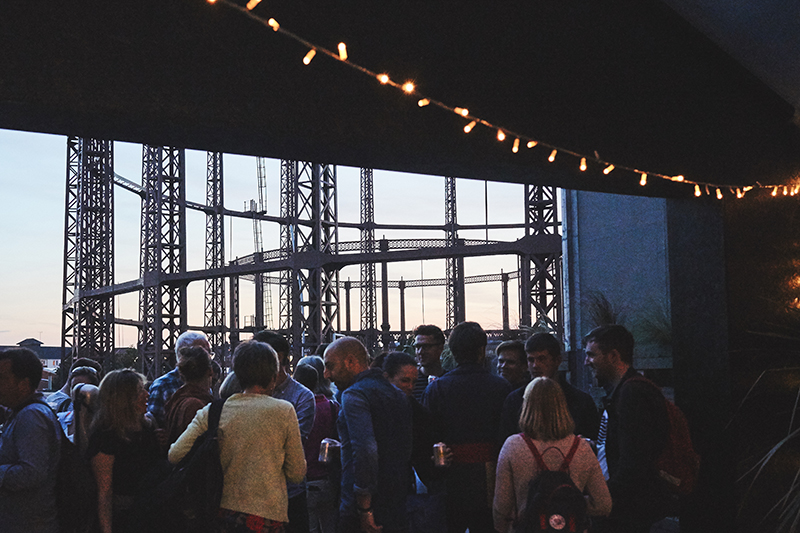
The good weather has followed us to London (yes, we’re not letting this one go – the weather last week was BETTER in Glasgow than it was in London so this means that now the weather is nice in London, we brought this. Right. Done. No more weather smugness. It’s boring and it’s tempting fate and it’s probably happened once in the last decade).
It is glorious, but it’s also dusty and suffocating when you’ve got places to be and rehearsals to nail, and it’s a relief to get inside the cool concrete cavern of the Oval Space – a nightclub and general all-purpose-arty-contemporary-happenings space next to two huge gas holders down a winding graffitied lane in Hackney.
Rachel, the Concert Manager at Spitalfields Summer Music Festival, is showing me around in an attempt to find a quiet place for press interviews (everyone wants a piece of Anna); as we walk along the smoking deck to the outdoors bar shadowed by massive barrels of scaffolding she concedes that this isn’t like one of their ‘normal’ concerts. We don’t know what sort of person is going to walk through the door tonight, and what will have attracted them here.
Collaborations involving classical and electronic artists are nothing new, of course – the people attending tonight’s concert aren’t going to fall off their stools in shock when they see a laptop next to a cello – but lurking at the back of the actual rehearsals, when you’re just with the music, certain things crop up that makes you wonder about the deeper, perhaps even subconscious, ramifications of putting the two together.
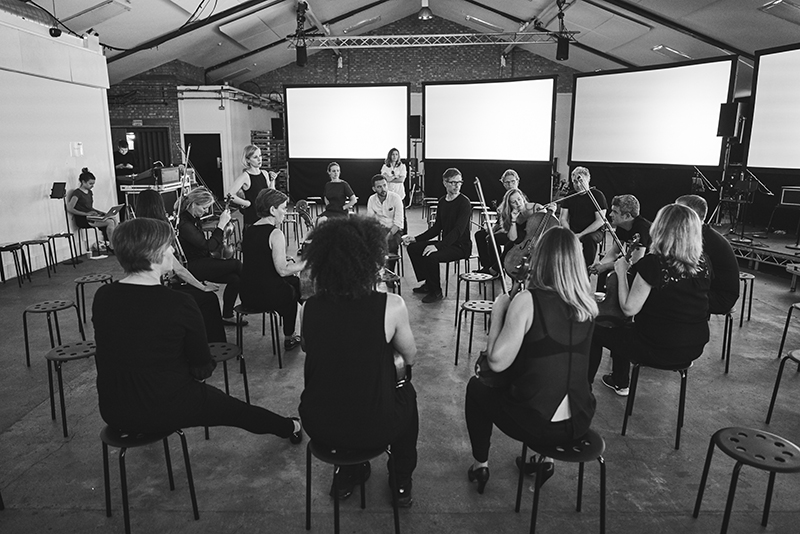
Jon has headphones clamped to the back of his head, two googly insect eyes trailing wires down his back. He’s waving his arms around and stamping his feet in between jagging out little snippets of Vivaldi on his violin. He looks like a brilliant, mad scientist (albeit one who has a wife to dress him in a sensible manner). “The exciting bit here is the speed, not the volume. It’s not the, the, blaarrrgh, it’s the dugger-dugger-dugger-dugger that’s the exciting bit. Save your energy for” – he jumps up to check the music – “the second half of bar 59 and then reeeeeally enjoy that speed. Dugger-dugger-dugger-dugger.”
“Speaking of energy: I’m really grateful for all the energy you’ve put into this so far. I mean, my arm is absolutely aching. We’re so used to more physical energy meaning more sound – the more we put in, the more we put out – but when there’s all this sound coming out of speakers it’s kind of a waste of energy to use so much of ours in an attempt to compete. We can’t compete with that. I’m wondering if there’s a way we can provide all the physical movement – like, physically, be loose, and move – but let’s not try to be triple fortissimo, like – blaaaarrghhhh – because it’s a battle you’re going to lose.”
Just to be clear, this section he’s talking about is about two minutes long. It’s not characteristic of the whole piece by any means, but it’s significant. In this couple of minutes you experience the chasm between ‘natural’ and electronic sounds, echoed in Ellie’s visuals, inspired by walking around East London, which juxtapose the man-made and the natural. Technology has barged in and made our lives easier, louder, faster, brighter. Violin? There’s an app for that. Things like speed, that speed they want to achieve in the dugger-dugger bits of the Vivaldi with their arms and shoulders and fingers, could be done with one click of a button on Anna’s laptop. Then she could make it even faster; loop it; warp it. In terms of volume, one click of Anna’s finger is far more powerful than one bow-length on Jon Morton’s 1640s Nicolo Amati. If the spirit is willing, the machine is also willing; not the case with a violin.
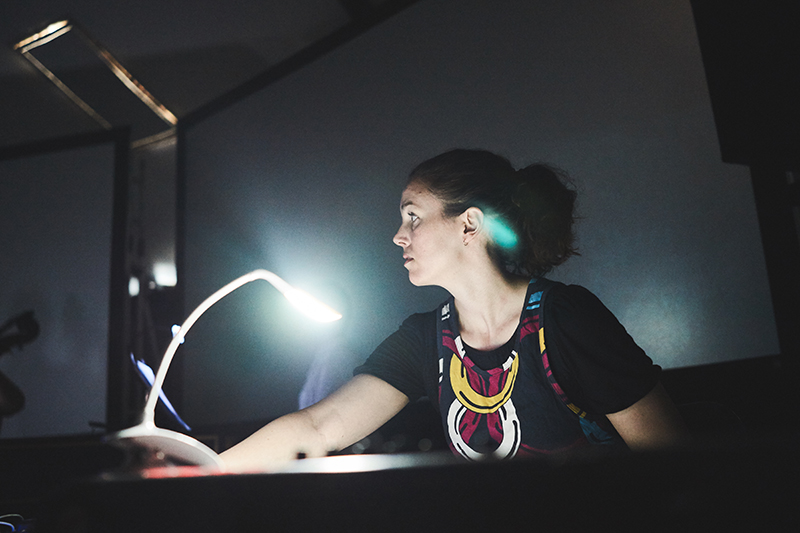
In one way it’s kind of frustrating, especially from the point of view of The Youths who classical music organisations are constantly trying to grasp, arms outstretched, desperate rictus grins across faces. If children like things loud, fast and immediate – and the evidence would suggest they do – and they can make the loudest, fastest noises on a machine, why would they go to all the slow, difficult, time-consuming, frustrating, shoulder-aching effort of learning a musical instrument?
But in another way… it’s not frustrating at all because this kind of performance is like an audio-visual advert for why you would bother picking up an instrument. Strings can do things computers can’t – otherwise, why bother with them, in shows like this? They’re just different. It sounds simple, but in a world where constant demands on attention can make us overlook the simple things, it feels like an important thing to state.
Here’s an example: the trills from the first movement of Vivaldi’s Spring, used in Anna’s piece as a linking section between hers and Vivaldi’s opening movements. Most people and high school examiners would probably agree they sound like birds, a feature which – without giving too much away – is enhanced in Anna’s composition by various birdy sounds and samples from the speakers. The genius part of this is allowing these recordings to alternately underline, interweave with and transcend the musicians’ little quivers of birdsong, played live two metres from your seat, their heads dotting rather cutely in front of the screens like sparrows. Just this section, this 20 or 30 seconds, highlights the sheer amazingness of playing a string instrument – the nuance, shapes, colours and vistas that can be created by a human being manipulating horsehair on metal.
It feels like a massive disclaimer is needed here. I’m not a technophobe (although admittedly fall into that category of people who will never really understand a Kindle, because the ease doesn’t make up for the tactile and even olfactory qualities of real-life books, even though if worst came to worst and someone took my book from between my fingers and squeezed in a ready-loaded Kindle on the same page and gave me a soothing pat on the shoulder, I’d use it if it meant I could carry on reading. I’m not sure there’s a word for these people yet but there should be; it’s quite a specific relationship with technology).
I also love electronic music and think DJing and live electronics is categorically, unarguably on a par with playing an instrument in terms of difficulty, passion, skill, musicality. When I mention ease and immediacy, I’m not talking about the creation or manipulation of sounds, but the capacity of the machines through which we access them.
In short: the reason I’m banging on about classical music is because electronic music doesn’t need defending and championing to a younger generation.
Many of the people who’ve come to see this show may have been attracted by the electronics. There is a very good chance they’ll also leave feeling lustful and reeling from the strings.
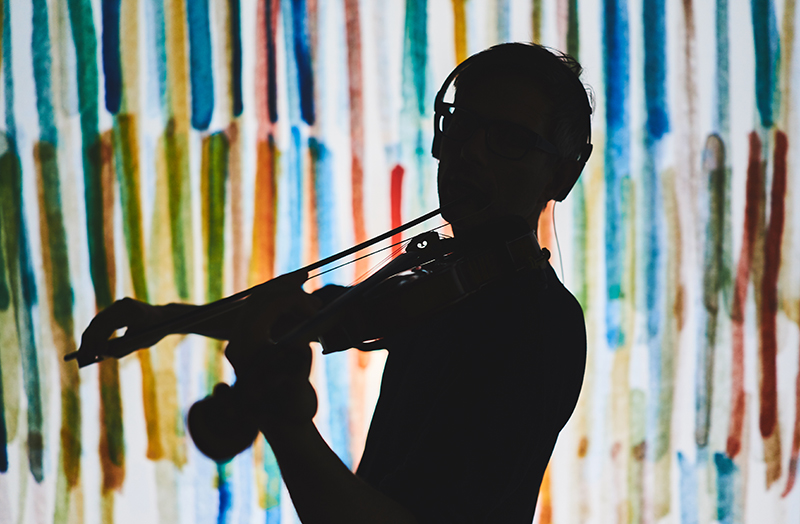
Photography by Scottish Ensemble filmmaker-in-residence Hugh Carswell.
